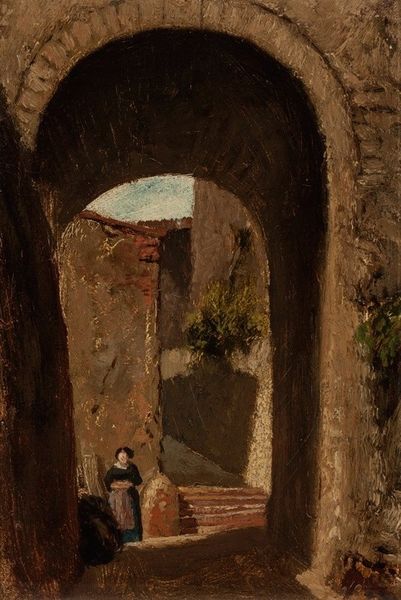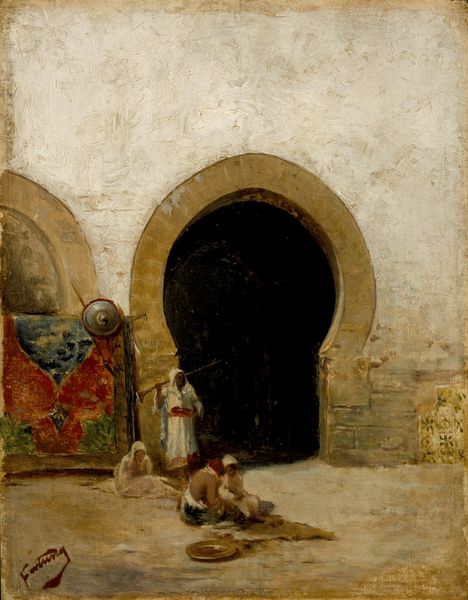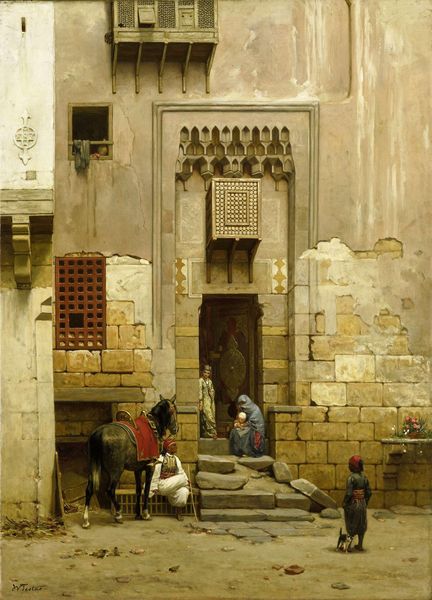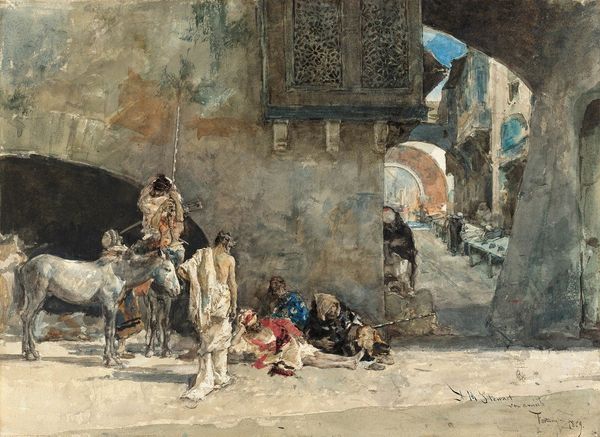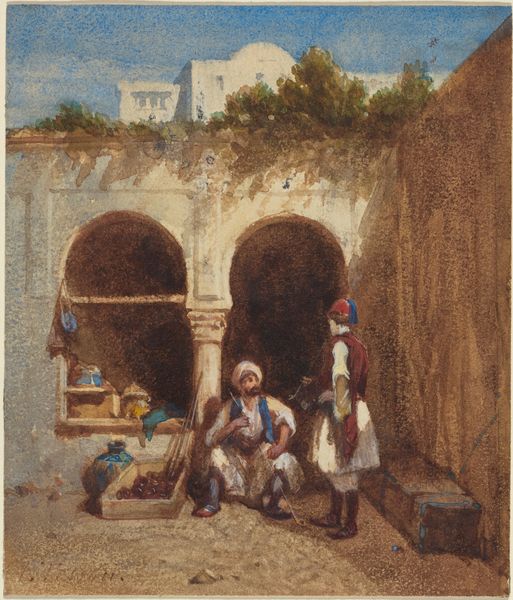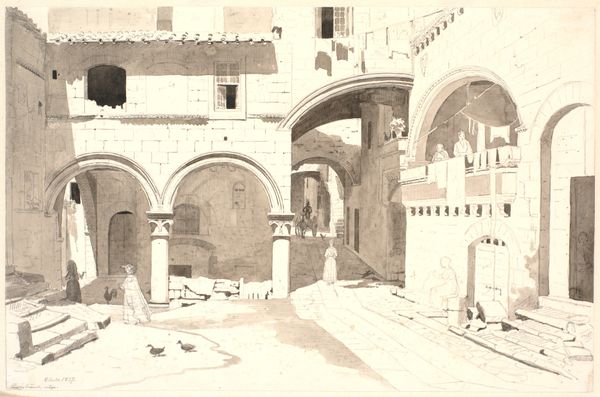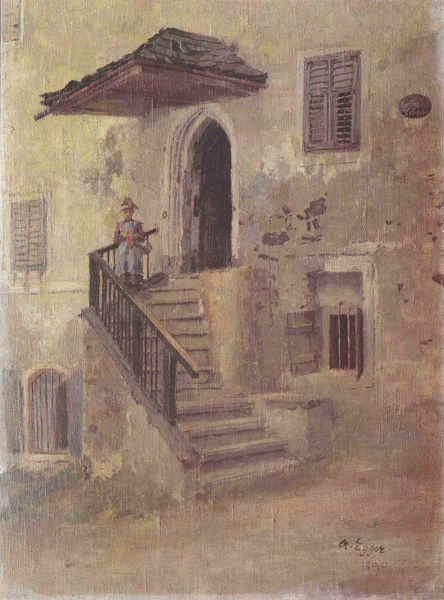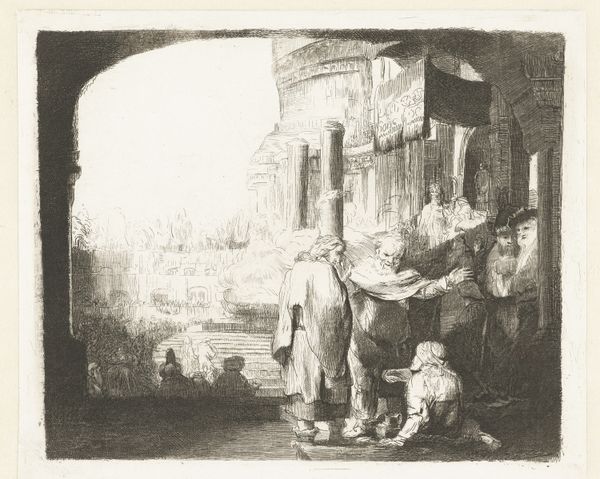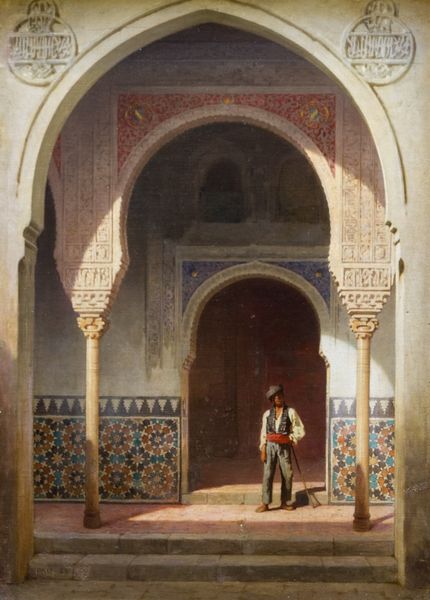
painting, oil-paint
#
painting
#
oil-paint
#
landscape
#
figuration
#
cityscape
#
genre-painting
#
italian-renaissance
#
italy
#
realism
Copyright: Public domain
Editor: Here we have Vincenzo Cabianca's "Church of San Pietro in Portovenere," created around 1860 using oil paint. I’m struck by the rough texture of the stone in contrast with the smoothness of the distant sea. What draws your eye in this piece? Curator: My eye is drawn to the materiality itself, that interplay between rough stone and smooth water that you mentioned. Look closely at the construction; the building isn't just background, it's built, brick by brick, with intention. Notice how the shadows and light suggest the passage of time and the effects of labor upon this place, the very wear and tear of daily life visible in the stonework. What does the application of paint tell you about Cabianca's engagement with depicting that labour? Editor: I see what you mean. The thick application makes the stone almost tactile. He seems less interested in idealizing the architecture and more in showing how people interact with it, how the space is used. Does that connect to the people he depicted within the structure? Curator: Exactly! They are integrated into the stone, another element shaped by, and shaping, their surroundings. Are they consuming art and architecture, or are they part of its production and daily existence? Do you see how Cabianca challenges traditional boundaries between the architecture and everyday life? How would it look if the social element was not included? Editor: Without the people, the architecture becomes a symbol only, and the piece would have lost its meaning relating to people’s lives, making it a landscape instead. I’m beginning to see how looking at the materials and processes involved helps us understand the artwork's message in a more tangible way. Curator: Yes! Examining materiality forces us to consider the real, physical impact of creation, of labour, rather than just appreciating the surface aesthetic or the symbolic.
Comments
No comments
Be the first to comment and join the conversation on the ultimate creative platform.
